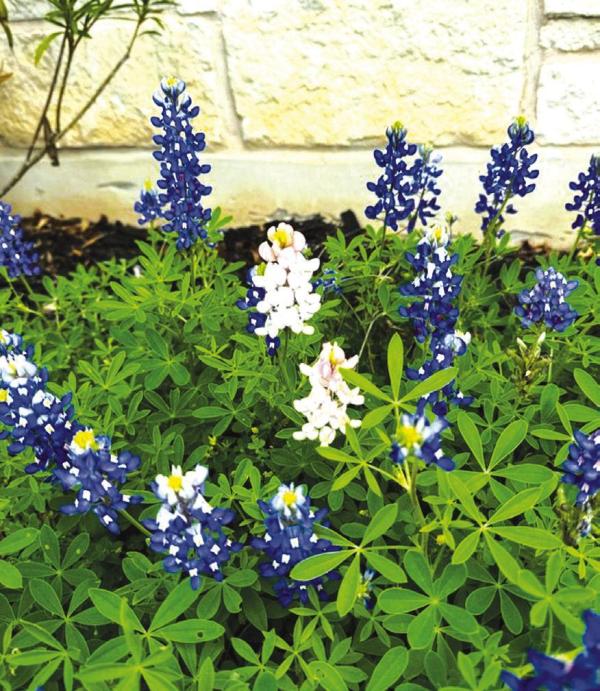Bloom into Spring: The beauty of native Texas perennials
The sun is warmer, the birds are singing, the snails are snailing and the Texas native wildflowers and perennials are blooming. The sight of fields alive with colorful blooms signals a joyful spring for many Central Texans. These flowers — reseeding annuals and herbaceous perennials — thrive in our harsh Texas environment and are tolerant of wildlife.
Most wildflowers are reseeding annuals which drop their seeds when the blooms are spent. These seeds lie dormant until spring, when the rain and sunshine encourage blooming. Our Texas Bluebonnet (Lupinus texensis) is the star of the show in March and April; frequently in spring, our fields and roadsides come alive with the beautiful combination of bluebonnets and the orange blossoms of the Indian Paintbrush (Castilleja indivisa). Another blast of pink/lavender color is provided by the Prairie Verbena (Glandularia bipinnatifida). To start a new wildflower garden in your yard or field, gather the seeds dropped by the flowers in late spring, save them until the fall (many folks keep then in the freezer) and spread them in late October or November.
Several native perennials also put on a show in early spring. A native to caliche soil, a stellar red bloom spikes, bringing color to shady spots. The Salvia roemeriana, also known as the cedar sage, is a native perennial that attracts pollinators. It reseeds and spreads from roots, so it easily naturalizes and does well in shade or partial shade. Another native perennial, Mealy Blue Sage (Salvia farinacea) provides two- to threefoot tall spikes of purple blooms which continue to flower until late summer. The bees, butterflies and hummingbirds love this hardy native of the Edwards Plateau. One of the loveliest sights around town in the spring is provided by the Crossvine (Bignonia capreolata). The lovely coral, trumpet- like flower is very showy and a real favorite of hummingbirds. These herbaceous perennials will come back from their roots and are easy to transplant and propagate.
So this March and April, whether you are soaking in nature’s bounty in our Central Texas fields or in your own yard, appreciate the beauty and hardiness of our native flowers. As we move into May and June, additional wildflowers and native perennials will show off their colors.


